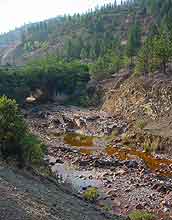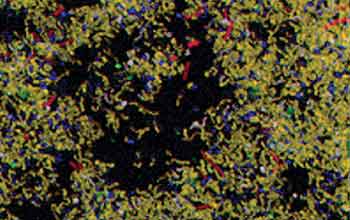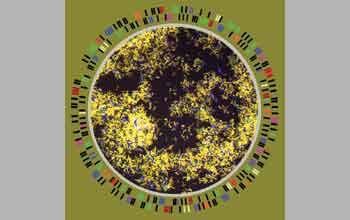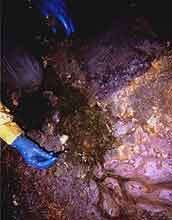All Images
News Release 04-011
Microbial Biofilm Yields Community Genomes, Metabolic Clues
Research from Iron Mountain mine sheds light on acid drainage
This material is available primarily for archival purposes. Telephone numbers or other contact information may be out of date; please see current contact information at media contacts.

Acidic drainage from a mine flows on the surface after passing through the underground study site at Iron Mountain, near Redding, Calif.
Credit: Gene Tyson, UC Berkeley

This FISH (fluorescence in situ hybridization) image of the microbial biofilm shows the cells of Leptospirillum group II in yellow, Leptospirillum group III in white, archaea in blue, sulfobacillus in red, and eukaryotes in green. From the biofilm sample, two near-complete and three partial genomes were recovered.
Credit: Gene Tyson, UC Berkeley

This FISH image of the biofilm - showing Leptospirillum in yellow, archae in blue, and Sulfobacillus in green - is surrounded by a representation of a genome sequence that indicates genes by colored bars.
Credit: Gene Tyson and Jill Banfield, UC Berkeley

How did researchers get samples of the pink biofilm from a toxic drainage deep in the mine? Very carefully.
Credit: Brett Baker


